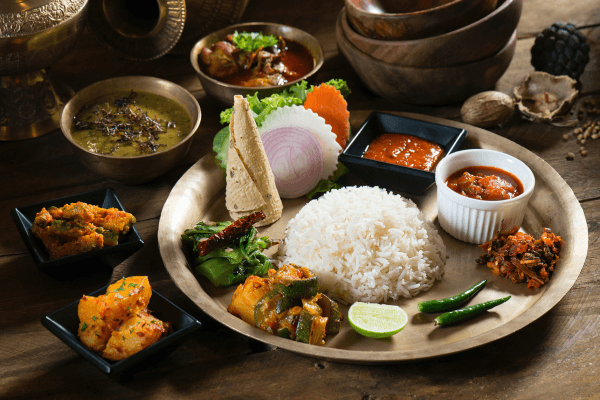Over the past few years, there have been changes in our lifestyles, such as greater reliance on pre-made meals, dining out rather than cooking, and taking more vacations overseas.
In this blog, we will get to understand what is food poisoning, its symptoms, its causes, and how to prevent it.
What is food poisoning?
Food poisoning, sometimes referred to as food-borne illness, develops after consuming any article of food that is contaminated with pathogenic bacteria, parasites, or viruses.
The illness is distinguished by:
(a) A history of consuming a typical meal
(b) Multiple people being attacked simultaneously
(c) Most cases have similar indications and symptoms.
Toxins produced by these dangerous compounds have the potential to cause illness in individuals, sometimes in extreme cases they can lead to death.
Symptoms of food poisoning
Depending on the particular contaminant, food poisoning symptoms might vary, but typical indications include
- Nausea
- Vomiting
- Diarrhoea
- Abdominal pain
- Fever
- Muscle aches
- Headache
- Fatigue
- Dehydration
It is crucial to remember that symptoms could show up right away or take days to occur after eating tainted food.
Medical attention may be required in extreme cases or with specific contaminants, particularly for vulnerable groups like small children, the elderly, or people with compromised immune systems. Seeking medical attention is advised if suspected food poisoning and symptoms are severe or persistent.
Causes of food poisoning
- Microbial contamination
- Bacteria – Bacillus cereus, Staphylococcus aureus, Salmonella group (except S. Typhi), Shigella, Vibrio, Escherichia coli, Campylobacter, Yersinia enterocolitica and Clostridium.
- Viruses – Rotavirus, adenovirus, and parvovirus.
- Protozoa – Giardia lamblia.
- Fungi – Aspergillus flavus and Fusarium roseum.
- Non-Microbial contamination
- Vegetable origin – Lathyrus sativus, mushrooms, and argemone mexicana.
- Animal sources – Fish like shellfish, scombroid fish, and mussel.
- Chemicals – Flavouring agents, colouring agents, and preservatives.
How does it start?
When people eat or drink anything tainted with toxic substances or dangerous microorganisms (viruses, bacteria, or parasites), it can lead to food poisoning.
- The surroundings in which food is cultivated, prepared, or packaged may contain microorganisms. Pathogens can infect crops when contaminated water is used for irrigation or during food production.
- When food is being prepared, microorganisms may spread from one surface of the food item to another – using the same chopping board for both raw meat and veggies.
- Food that is raw or undercooked may contain dangerous bacteria or parasites that are not eliminated by cooking at low temperatures. One common cause is eating undercooked meat, poultry, or seafood.
- Food can be contaminated when food is improperly stored at the wrong temperature.
- Perishable goods should be promptly refrigerated to stop bacterial growth.
- Inadequate hand washing or other hygiene practices not followed during food handling can introduce contaminants. Infected food handlers have the potential to spread pathogens to the food they prepare.
- Harmful microorganisms may be present in water used for irrigation or food preparation. There is a risk when consuming raw or undercooked seafood from tainted water sources.
- There is a higher chance of bacterial or viral contamination when consuming raw or unpasteurised foods like milk, cheese, or eggs.
- Raw food when comes in contact with an unclean surface, may harbour pathogens.
How to prevent food poisoning?
Clean
- Microorganisms live in different environments and multiply throughout the kitchen.
- It is important to clean the surface and hands before, during, and after cooking to avoid contamination.
- Thorough cleaning of utensils such as cutting boards, knives, and bowls that are used for cooking is important.
- Countertops should be cleaned with hot and soapy water.
- Washing of hands should be done for at least 20 seconds with soap and either warm or cold water is advised.
Separate
- Always store raw meat, poultry, seafood, eggs, and chicken separately from the other produce.
- Raw meats tend to have blood and other juices leak from them, when they come in contact with other food, cross-contamination can happen.
- While grocery shopping it is important to separate the meat and meat products away from other food.
- Raw meat, poultry, and seafood can be stored in air-tight containers.
- Always use different cutting boards for all the meat and meat products.
- When washing or cleaning any meat, poultry, or seafood always make sure to clean the surface, utensils, and countertop.
Cook to the right temperature
- Cooking any food at the right temperature will kill any potential pathogenic microorganisms.
- A food thermometer can be used to check if the food is cooked at the right temperature.
- Whole cuts of fresh ham as well as lamb, veal, and pork – 145°F; after that, let the meat rest for three minutes before slicing or consuming.
- Finned fish should be cooked to 145°F or until the flesh becomes opaque and separates easily with a fork. Meats that are ground, like pork and beef – 160°F, poultry – 165°F.
Chill
- Leaving food at room temperature can help bacteria multiply. It is known as the danger zone (40°F to 140°F).
- Refrigerator temperature should be maintained at 0° or lower so the food is not spoiled.
- The appliances have built-in thermometers, which can be used to check if the appliance is at the right temperature.
- Perishable foods (fish, meat, dairy, cut fruit, some vegetables, and cooked leftovers) should be refrigerated within two hours of purchase.
- Food should be refrigerated within an hour if it has been exposed to temperatures above 90°F, such as in a heated car or during a picnic.
- Food that has been frozen can be safely thawed in the microwave, cold water, or refrigerator.
- Food should never be thawed on the counter because room temperature causes bacteria to grow rapidly.
Food poisoning is a significant health risk caused due to contaminated food, ranging from microbial to non-microbial sources. The risk of food poisoning increases, necessitating careful handling and preparation. Causes include production, intellectual fraud, under cooking , unsafe storage, unsanitary food handling, contaminated water, raw or unpasteurised products, and contaminated utensils and surfaces.
To prevent food poisoning, proper hygiene practices, separating raw and cooked foods, cooking to/at the right temperatures, and chilling perishable items promptly are essential.
By fostering awareness, individuals can make informed choices and contribute to a safer and healthier food-handling environment.
Food safety is a shared responsibility that starts with proper handling and ends with enjoying meals without foodborne illness.
Kripa N,
Senior Clinical Dietitian, Simplyweight













